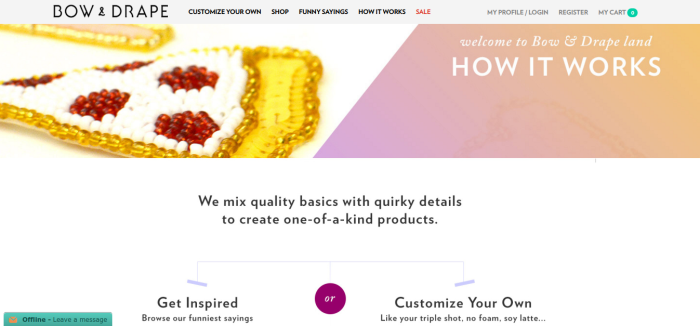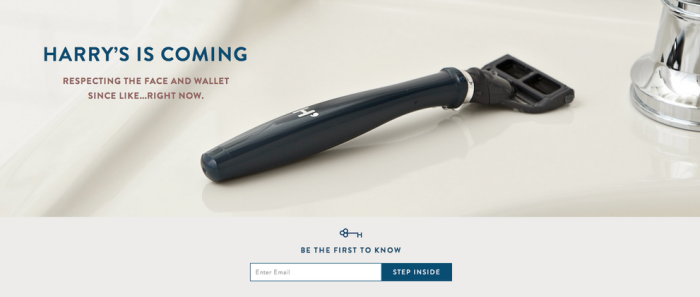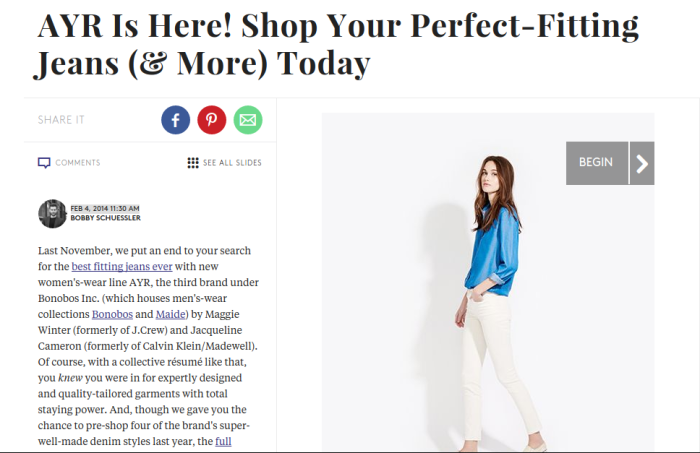10 Stages to a Successful Product Launch
In 2014, research firm Nielsen conducted a study that found 85% of all consumer packaged goods (CPG) product launches flop. Of course, many see this as a necessary cost of doing business. To effectively test whether or not their ideas will fare well with consumers, big brands develop dozens of products, investing millions in the process, hoping that a handful will become wildly popular. And they do all this knowing a majority of their newest products will fail. For small businesses though, this statistic is hugely discouraging. Fortunately, there are things brands and store owners can do to ensure the next products they develop, launch and promote are a success.
To help you beat the odds, we have outlined 10 steps every Ecommerce store should take to increase their chances of a successful product launch.
1. Start with a deep understanding of users’ needs
Good products are a dime a dozen. Great products, on the other hand, are crafted with an intimate understanding of customers’ needs. Brands would be remiss to produce and market a product without full appreciation of what customers want. In an article for CMO.com, Michael Hinshaw notes, “The cost of ignorance can be incredibly high.” He adds, “Lack of customer understanding at the individual level makes it hard for your company to effectively give them what they need, when they need it. And when customers don’t get it from you, they’ll get it somewhere else. After all, if you don’t know your customers, then how can you possibly deliver the kinds of experiences they desire?” So, before you do anything, survey the market to learn what customers actually want. Then, perhaps, you will be able to create something people will happily pay money for.
2. Identify competitors and untapped markets
Next, find companies that already service your target audience. Then, ask yourself:
- What are their unique advantages?
- How are they positioning their brand and product?
- What are some needs these businesses fail to address?
The answers to these questions will help you discover ways to set your product apart from all the other offerings on the market.
3. Build and test a cheap, scrappy prototype
Some products take months, sometimes years, to perfect. Because of that, many companies drown themselves in debt before they get a working prototype ready. And, even then, the product may fail to live up to expectations. To mitigate the risk of overinvesting in a doomed product, Ecommerce companies should aim to create quick and cost-effective prototypes which they can share with potential customers. Beta users can then offer feedback that will help reinvent your product so that it better meets their needs.
4. Go through multiple iterations of the product
As you gather customer feedback, it is important that you consistently reconfigure your product. Add features customers want. Remove things no one cares about. You may be surprised by how subtle redesigns completely change how your product looks and feels. Ultimately, it should be something that shoppers would not only want, but is something they would regularly use.
5. Set goals
Before you launch your next product, you should decide which metrics will determine your success. A few examples include:
- Number of products sold
- Total revenues generated
- Break-even sales volume
- Net profit earned
Then, set clear numerical goals and reverse engineer ways to accomplish them.
If, for example, you wanted to sell 100 products within your first week of launch, you would have to guesstimate your website’s conversion rate and then figure out how much traffic you would need to reach 100 orders. On average, Ecommerce sites convert 2-3% of their overall traffic. That means, you would need to drive 3,333-5,000 visitors to your site. Alternatively, if you wanted to break-even on your initial investment of $50,000, you would first need to understand what your product margins are. So, if you sold a $50 product with a $10 profit margin, you would have to sell 5,000 products to break-even. Thus, you would need to get 250,000 visitors over to your website if you only had a 2% conversion rate or 166,666 visitors if you had a 3% conversion rate.
6. Pre-market the product
A successful launch is contingent on the work you do both before and after your product goes public. Fearful that no one would show up to its launch, men’s grooming company Harry’s decided it would market its business a week before it went live. And during that time, the company managed to collect 100,000 emails from interested customers.
Three things the team behind Harry’s did were:
- Create a quick splash page to capture emails
- Encourage signups to spread the word about Harry’s in exchange for free product
- Plug a link to its landing page within employee email signatures
Now, the business is worth more than $750 million.
Another way to promote your product pre-launch is by getting early support from bloggers, journalists and industry influencers. Public relations (PR) can be a powerful way to get tons of people excited about your upcoming launch. Two things you can do are:
- Have members of the media and influencers share product teasers pre-launch OR
- Have everyone agree to a news embargo, which means they would all commit to talking about your product the moment it goes live.
For brands with money to play with, advertising is an option too. To create hype and generate interest in your product pre-launch, you can set up a landing page and drive paid traffic to it. One advantage to doing this early is you get the chance to test different creatives so that you are more likely to have the perfect ad copy and image combination ready when your product is public.
7. Establish a scalable supply chain
When Ecommerce companies prepare to launch a new product, their main concerns are:
- Is the product ready?
- Will customers purchase it?
What they rarely worry about is what happens when demand grossly exceeds supply. This, of course, is one of the best things that could happen at launch time. But an overwhelming volume of orders can serve as both a blessing and a curse because you may find yourself with a weeks-long backlog of orders and an increasingly impatient customer base.
To mitigate these risks, you will want to set up a scalable supply chain. If you have a preferred vendor, ask them what their maximum capacity is. 100 units or 10,000? Then, figure out if they have any tricks up their sleeve to scale production in case your product launch is a huge success. Sometimes, manufacturers know other vendors they can subcontract work out to.
8. Start taking orders and contact everyone you know
If you have shared a launch date with anyone (potential customers, members of the media, influencers, etc.), be sure to stick to it. Otherwise, you risk losing credibility with those contacts.
On launch day, shamelessly tell the world about your business and encourage others to spread the word.
9. Reengage the press
If you did a good job in securing pre-launch press, then drawing post-launch media attention will be easy. As soon as your product is live and bloggers have written about you, reach out to other members of the media to see if they would also be interested in covering your story. Many times, journalists and publications will only respond to your PR pitch after other news outlets have written about you. Internet marketing expert Ken McGaffin calls this the “Cascade Effect.” McGaffin defines it by saying, “Journalists will often quote, comment or enlarge upon other journalist’s work. Bloggers are also constantly citing other stories. So if you get your story covered in one prominent media outlet, you’ll quickly see a cascade of similar stories and links spring up.”
10. Address post-launch feedback
It’s one thing to test your prototype on a few dozen beta users; it’s another to introduce your product to thousands of customers at once. Even if you happen to generate a lot of positive buzz for your launch, public perception of your brand can change drastically if your product overpromises and underdelivers. Be empathetic when customers share criticisms and always respond with both a short-term answer to address their immediate needs and a long-term solution to ensure future customers do not encounter the same problems. This also demonstrates your willingness to develop the best product possible for your users, earning their loyalty and trust.
If you are in for the long-term effort and want to grow your store, our weekly tips on how to do so might be a good fit for you:
Give it a try, they are free!


